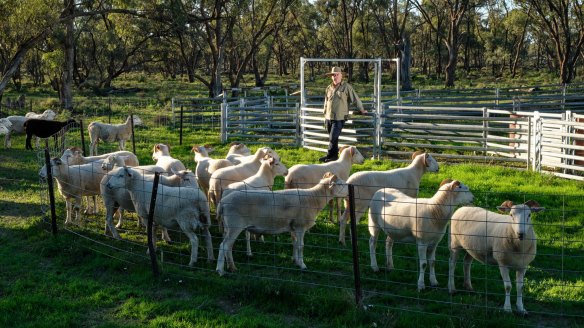Much ado about mutton: the deliciousness of eating older animals (and how to cook them)

Australian farmers are finding rich and flavoursome veins of income in the meat of old sheep and cattle that once would have ended up in pies and burgers. Record meat prices, diners' evolving taste buds and increasing global demand for protein have contributed to the ability of old cows and ewes to bring in extra revenue.
For more than a decade, Bill Williams has raised Wiltshire Shorthorn sheep on his family farm in Wakool, a small town built on saltbush country near the Victorian border in NSW's Riverina region.
Working under the brand name Saltbush Billy, Williams usually focuses on lamb and hogget (meat from sheep aged between 13 months and two years). However, this season the farmer has tapped into the increasing demand for older meat, processing his five-year-old ewes that are no longer fertile.
"We used to send them off to market and get pittance," he says. "The irony is that the infertile ewes haven't had to raise a lamb and all the energy and nutritional output that entails. This means they're in superb condition."
Williams dry ages the ewes for three weeks to improve their texture. "The flavour is deep and intense," he says, noting how rare it is to process sheep so old – most farming models are "all about getting on as much weight on animals as quickly as possible".
Neil Prentice of Moondarra Wagyu is also in the old meat business. The Gippsland beef farmer and winemaker was a pioneer in the marketing of over-the-hill wagyu almost a decade ago. He named it Furu Ushi, Japanese for "old cow".
"We used to kill our old cows for the home freezer," he explains. "But it was tough. You needed really good teeth to get through a steak."
Prentice says the secret to getting the most out of the beef from his "old girls" is dry-ageing, which involves hanging the carcass under very cold conditions with controlled humidity and air flow for several weeks.
"During that time naturally occurring enzymes start to break down the muscle fibres making what could be tough meat very, very palatable," he says.
He now processes 10-year-old breeder cows that can no longer fall pregnant and ages them with Victorian meat distributor Gamekeepers. Moondara Furu Ushi is usually priced at $120 per kilogram retail.
Prentice also sells direct to Tom O'Sullivan from Abacus Restaurant in South Yarra. The chef dry-ages the meat for up to 52 days. "The flavour is rich, buttery and intense," he says.
O'Sullivan minces some cuts for sausages, makes bresaola with the topside and braises the short ribs. "The fat is remarkable. We render it down and coat the exposed muscle when we dry-age the meat and use the fat to confit other cuts."
Retired dairy cows are being targeted for prime cuts of beef too. Camden farmer Luke Micallef milks Jersey cows on his farm at Cawdor on the Nepean River flats, 65 kilometres south-west of Sydney. He is also used to selling his older animals for hamburger mince.
"A lot of dairy cows [that won't calf] will go to hot-boning rooms," he says. "Here, animals are slaughtered but not chilled before processing. Within 30 minutes they are in a box and ready to be shipped to the United States for burgers."
Seven years ago, Micallef and his wife Jess decided they wanted a better end for the cows that had given them 23 litres of milk each day for more than 10 years. Now when their cows can no longer bear calves, they are retired to pasture for 12 months to fatten up.
"It's not about the most tender piece of meat," says Micallef. "It is about flavour, and flavour does not happen overnight."
His retired dairy cow beef is sold exclusively through Vic's Meats online and is so highly desired that cuts sell out within minutes.
How to cook older meat at home
As animals age their connective tissues strengthen, thicken and harden. If you are grilling, barbecuing, or roasting older meat, it is important to use a sharp knife to remove any sinew and silver membrane.
Meat from old animals is exceptionally good in stews and curries. Primal cuts can be grilled or barbecued as any other meat but resting is essential after cooking.
The stronger flavour of older meat means that seasoning is also paramount, so season before and after cooking. Roasted mutton (old sheep) shoulder needs to be started in a very hot oven for 30 minutes then slow roasted at 140-160 degrees for four to six hours, covered.
Restaurant reviews, news and the hottest openings served to your inbox.
Sign up- More:
- Restaurant news
